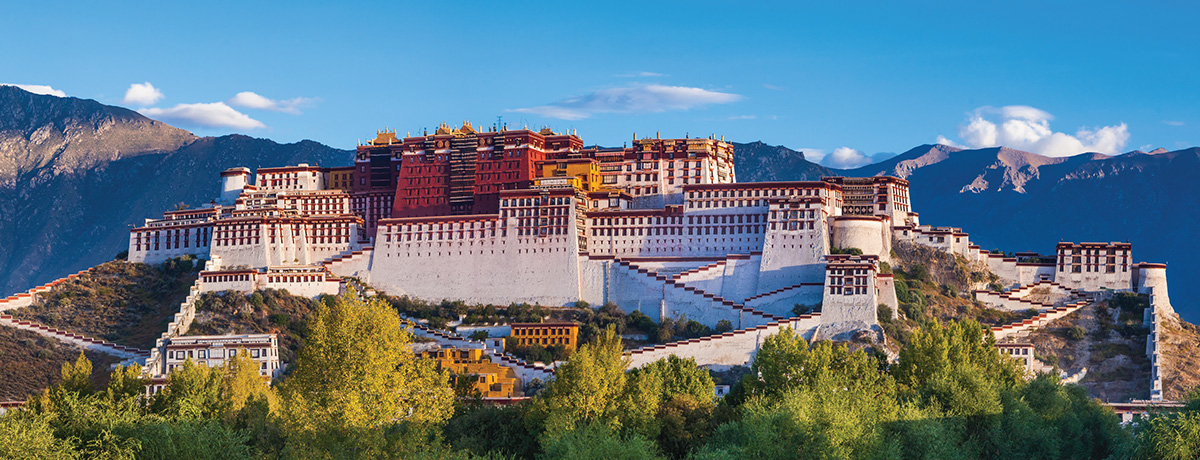
The Five Tibetan Rites, also known as the “Fountain of Youth,” are a series of five exercises said to have been practiced by Tibetan lamas (monks) for over 2500 years. The story tells of an English colonel who, during his travels in Tibet, noticed the youthful, vibrant energy of even the eldest monks and committed to staying in the monasteries to learn their secret of youth. After learning much, he concluded that the one most powerful practice of all the monks was the Five Rites. Ultimately a condensed form of yoga that powered the chakras, strengthened and healed the body while balancing the physiological systems.
Practitioners of the Tibetan Rites report increased energy and mental clarity, greater spinal flexibility, a decrease in body pains especially within the joints, better sleep, better digestion and improved libido. I can agree with those practitioners. Interestingly, data has emerged in the last few years suggesting that the flexibility of our spine predicts the flexibility of our arteries, and a yoga practice centered on spine flexibility, just like the Five Rites, may help maintain our arteries in a youthful state. Although the Tibetan Rites haven’t been studied for arterial health, other studies suggest the flow can help cardiovascular health.
From a more ‘yogic’ point of view, the power of the Rites lies in the positive effect on our chakras. According to Tibetan monk practitioners, youth and vigour can be achieved when the chakra energy fields spin at the same rate. They practice the Five Tibetan Rites in order to achieve this.
The movements activate, energise and balance the chakra system which corresponds with our endocrine glands. Some of the major endocrine glands are the thyroid, parathyroid, pituitary, pancreas, adrenals and ovaries, and the hormones secreted by these glands play a vital role in controlling and regulating many of the body’s functions. In short, when our endocrine system is working well, we feel well.
Where to start...
• Respect the golden rule – respect your body and where it’s at in your practice.
Don’t push yourself too far too fast, modify moves when needed.
• The first week: do three repetitions of each movement. After the first week: add two or three repetitions per week, building up to 21 repetitions of each Rite (considered to be the full practice).
• Keep in mind that practicing the Rites correctly is more important than doing them quickly.
• Follow the recommended breathing pattern for each movement, keeping the breathing full and continuous.
• Practice six days a week. If you’re short on time, do fewer repetitions, but do them.
• Be aware that beginners may experience mild detox effects such as nausea, runny nose and aches, particularly if building up to many repetitions too fast.
Start with the cleansing breath and take two cleansing breaths between each Rite.
The short break gives the body a moment to integrate what it has just experienced.
Rite #1: Spinning
The first Tibetan Rite – spinning! With arms outstretched, palms facing down, stand tall and turn slowly around in a circle.
• Spin clockwise
• Breathe fully in and out through the nose as you spin
• Focus your gaze on the leading hand, if dizziness is too uncomfortable
• Take a break every few spins if needed to reduce dizziness
• Try to spin in the same spot (not as easy as it sounds)
• Stand with feet hip-width apart
• Rest your hands on your hips
• Inhale deeply through your nose
• Exhale fully through your mouth, forming an ‘o’ with your lips
Rite #2: Leg lifts
• Lay on your back, tucking your arms under your body
• Inhale through the nose as you raise legs to 90°, keeping them straight if possible.
• Modify this by lifting one leg at a time.
• Flexing your feet will deepen the stretch in the back of your legs.
• As you raise your legs, lift your head and tuck your chin to your chest.
• Keep your shoulders on the floor as you raise your head.
• Exhale through your nose as you lower your head and legs to the floor.
Rite #3: Ustrasana or Camel pose
• Kneel on your knees with your legs hip-width apart, knees in line with your hips.
• Curl your toes under and place your palms on the buttocks, fingers facing down. Keep your back straight and abdominals engaged.
• Inhale as you lift your chest, arch your back slightly and look up, gently squeezing your shoulder blades together, keeping your neck long (your focus should be on lengthening and opening the chest rather than arching).
• Ensure that your abdominals are engaged to protect the lower back. Watch out for the temptation to overarch!
Rite #4: Tabletop
• Sit with legs hip-width apart, knees slightly bent and your feet flat on
the mat.
• Place your hands next to your hips with fingers pointing towards your feet.
• Drop your chin toward your chest. Inhale and gently drop your head back. Simultaneously lift your hips and bend your knees until you’re in a Tabletop pose, with your head gently tilted back.
• Exhale as you lower back to the mat, tucking your chin to your chest.
• Exhale as you return to your starting position
Rite #5: The fifth Rite involves both the Downward-Facing Dog and Upward-Facing Dog poses. For this reason, it’s often called Two Dogs or Pendulum
• Sit on the floor with your legs crossed. Plant your palms in front of you.
• Extend your feet behind you, toes curled and shoulder-width apart. Straighten your arms and arch your spine while keeping the tops of your legs on the ground. Drop your head back into Upward-Facing Dog.
• Then, inhale and lift your hips, moving your body into an upside down “V” shape. Move your chin toward your chest and straighten your back into Downward-Facing Dog.
• Exhale and move back into Upward-Facing Dog.
• To support your lower back, you can bend your knees when moving in between poses.
Gradually move up towards 21 repetitions of all movements every day. Use it on its own or as a warm up to any other practice. The Five Tibetan Rites must be one of my all-time favourite practices – it works wonders for energy levels and stamina & takes less than 20 minutes a day!




